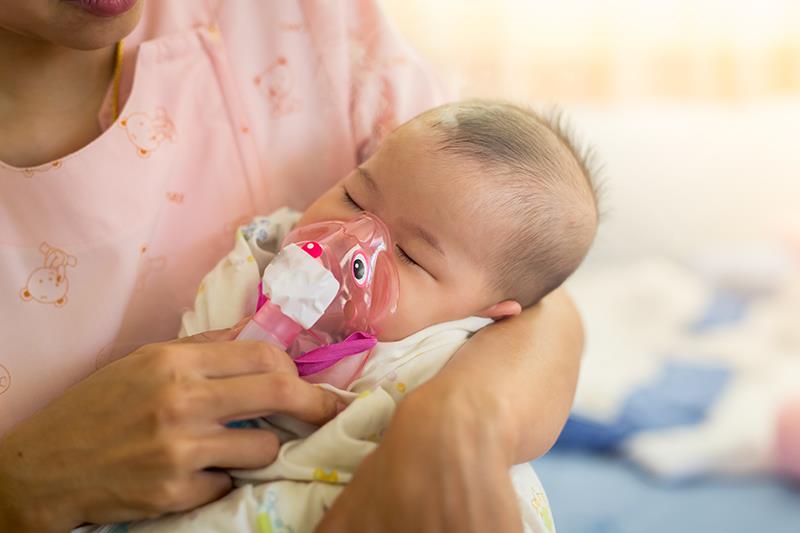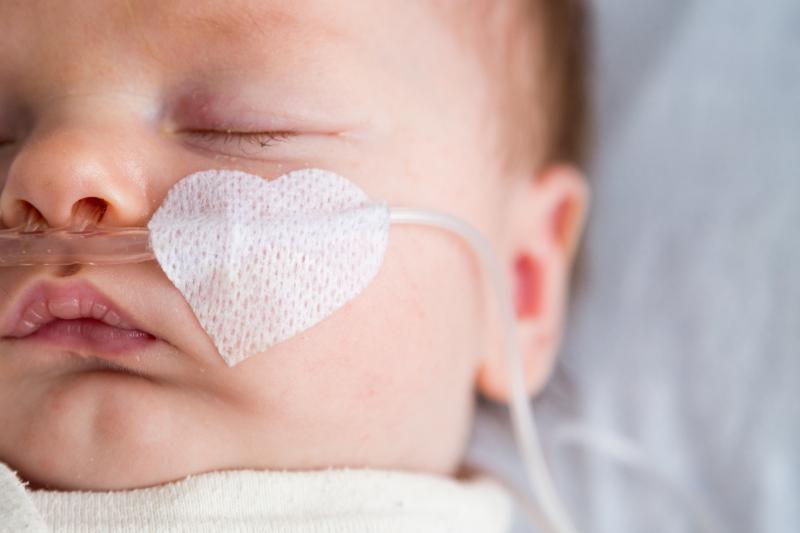Content:
Tổng quan
Nội dung của trang này:
Tổng quan
Tiền sử và khám thực thể
Chẩn đoán
Điều trị
Nội dung của trang này:
Tổng quan
Tiền sử và khám thực thể
Chẩn đoán
Điều trị
Tổng quan
Viêm tiểu phế quản là một bệnh lý của đường hô hấp dưới đặc trưng bởi tình trạng viêm cấp tính và phù nề của tiểu phế quản, kèm theo tăng tiết chất nhầy như được định nghĩa trong mục Giới thiệu.
Viêm tiểu phế quản thường gặp ở trẻ <2 tuổi và là một trong những nguyên nhân hàng đầu dẫn đến nhập viện ở trẻ sơ sinh tại Hoa Kỳ và châu Á. Phần thảo luận chi tiết hơn về tỷ lệ hiện mắc của viêm tiểu phế quản có trong mục Dịch tễ học.
Triệu chứng lâm sàng của viêm tiểu phế quản chủ yếu do tắc nghẽn đường thở và giảm độ đàn hồi phổi, thông tin chi tiết hơn được thảo luận trong mục Sinh lý bệnh.
Mục Nguyên nhân cho biết rằng đa số trường hợp viêm tiểu phế quản do virus hợp bào hô hấp (RSV) gây ra. Các nguyên nhân khác được liệt kê trong mục này.
Viêm tiểu phế quản thường gặp ở trẻ <2 tuổi và là một trong những nguyên nhân hàng đầu dẫn đến nhập viện ở trẻ sơ sinh tại Hoa Kỳ và châu Á. Phần thảo luận chi tiết hơn về tỷ lệ hiện mắc của viêm tiểu phế quản có trong mục Dịch tễ học.
Triệu chứng lâm sàng của viêm tiểu phế quản chủ yếu do tắc nghẽn đường thở và giảm độ đàn hồi phổi, thông tin chi tiết hơn được thảo luận trong mục Sinh lý bệnh.
Mục Nguyên nhân cho biết rằng đa số trường hợp viêm tiểu phế quản do virus hợp bào hô hấp (RSV) gây ra. Các nguyên nhân khác được liệt kê trong mục này.
Tiền sử và khám thực thể
Mục Biểu hiện lâm sàng thảo luận các dấu hiệu và triệu chứng của viêm tiểu phế quản và diễn biến của nó.
Mục Khám thực thể đề cập đến những dấu hiệu trên bệnh nhân viêm tiểu phế quản khi khám.
Mục Khám thực thể đề cập đến những dấu hiệu trên bệnh nhân viêm tiểu phế quản khi khám.
Chẩn đoán
Viêm tiểu phế quản được chẩn đoán dựa trên tiền sử và biểu hiện lâm sàng của bệnh nhân. Mục Chẩn đoán & Tiêu chuẩn chẩn đoán liệt kê các tiêu chuẩn chẩn đoán viêm tiểu phế quản.
Các xét nghiệm và hình ảnh học có thể thực hiện để chẩn đoán viêm tiểu phế quản được thảo luận trong mục Xét nghiệm và Hỗ trợ chẩn đoán và Hình ảnh học.
Mục Chẩn đoán phân biệt liệt kê các chẩn đoán thay thế của viêm tiểu phế quản.
Các xét nghiệm và hình ảnh học có thể thực hiện để chẩn đoán viêm tiểu phế quản được thảo luận trong mục Xét nghiệm và Hỗ trợ chẩn đoán và Hình ảnh học.
Mục Chẩn đoán phân biệt liệt kê các chẩn đoán thay thế của viêm tiểu phế quản.
Điều trị
Các chỉ định nhập viện của bệnh nhân viêm tiểu phế quản được liệt kê trong mục Đánh giá.
Mục Điều trị bằng thuốc nêu rõ liệu pháp điều trị phụ thuộc vào nguyên nhân gây bệnh. Mục này thảo luận về thuốc giãn phế quản dạng hít, dung dịch muối phun khí dung, ribavirin, xanthine và các thuốc khác có thể dùng trong điều trị bệnh nhân viêm tiểu phế quản.
Mục Điều trị không dùng thuốc thảo luận về giáo dục phụ huynh, liệu pháp bù nước và dinh dưỡng, thở oxy và thở máy không xâm lấn có thể là một phần của điều trị bệnh nhân viêm tiểu phế quản.
Các biện pháp phòng ngừa viêm tiểu phế quản được nêu trong mục Phòng ngừa.
Theo dõi bệnh nhân là một phần quan trọng trong điều trị viêm tiểu phế quản. Các biện pháp theo dõi và tiêu chuẩn xuất viện được thảo luận trong mục Theo dõi.
Mục Điều trị bằng thuốc nêu rõ liệu pháp điều trị phụ thuộc vào nguyên nhân gây bệnh. Mục này thảo luận về thuốc giãn phế quản dạng hít, dung dịch muối phun khí dung, ribavirin, xanthine và các thuốc khác có thể dùng trong điều trị bệnh nhân viêm tiểu phế quản.
Mục Điều trị không dùng thuốc thảo luận về giáo dục phụ huynh, liệu pháp bù nước và dinh dưỡng, thở oxy và thở máy không xâm lấn có thể là một phần của điều trị bệnh nhân viêm tiểu phế quản.
Các biện pháp phòng ngừa viêm tiểu phế quản được nêu trong mục Phòng ngừa.
Theo dõi bệnh nhân là một phần quan trọng trong điều trị viêm tiểu phế quản. Các biện pháp theo dõi và tiêu chuẩn xuất viện được thảo luận trong mục Theo dõi.


